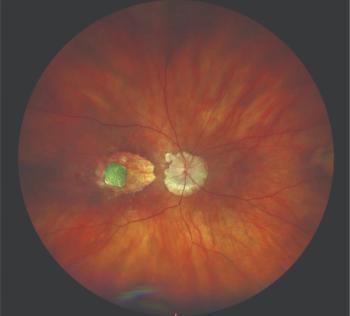
Long-term effects of COVID-19 on the ocular surface
A team of Turkish investigators lead by Oğuzhan Kılıçarslan, FEBO, FICO, MD, reported that COVID-19 affected thecorneal endothelial cell morphology in patients with ocular symptoms.1 Kılıçarslan is from the Department of Ophthalmology, Ayancık State Hospital, Sinop, Turkey.
They conducted a study in which they investigated the long-term effects of the virus on corneal endothelial cell morphology in patients with ocular symptoms to assess possible corneal involvement in patients who recovered from the disease.
The study was comprised of 2 groups, the COVID-19 group of patients who had been diagnosed and treated at Istanbul University Cerrahpasa Medical Faculty with confirmed SARS-CoV-2 infection and ocular irritation symptoms and the control group with no ocular pathologies that included age- and sex-matched individuals.
The investigators performed noncontact specular microscopy using the center method 156 days after COVID-19 had been diagnosed to analyze the endothelial cell density (ECD), hexagonality (HEX), coefficient of variation, and central corneal thickness.
Microscopy results
A total of 54 patients who had COVID-19 and had ocular irritation and 72 controls were included.
Specular microscopy showed that the ocular symptoms in the patients who had had COVID-19 included conjunctival hyperemia, foreign body sensation, tearing, ocular secretion, and chemosis. The mean ECDs were 2,770 cells/mm2 in the COVID-19 group and 2,897 cells/mm2 in the control group; the mean HEX was 46.52 in the COVID-19 group and 58.22 ± 13.94 in the control group.
The patients who had had COVID-19 had significantly lower endothelial ECD and HEX levels than controls (p = 0.003 and p< 0.001, respectively).
Kılıçarslan and colleagues concluded, “COVID-19 can cause long-term alterations in the corneal endothelial cells, leading to decreased ECD and HEX. Future research should focus on the long-term implications of COVID-19 on the corneal health and visual outcomes.”
Reference
Kılıçarslan O, Yılmaz Çebi A, Doğan C, Arslan OS. Long-term corneal endothelial parameters of covid-19 patients with ocular surface symptoms. Cornea
2024;43:1124-1127; DOI: 10.1097/ICO.0000000000003552
Newsletter
Don’t miss out—get Ophthalmology Times updates on the latest clinical advancements and expert interviews, straight to your inbox.





